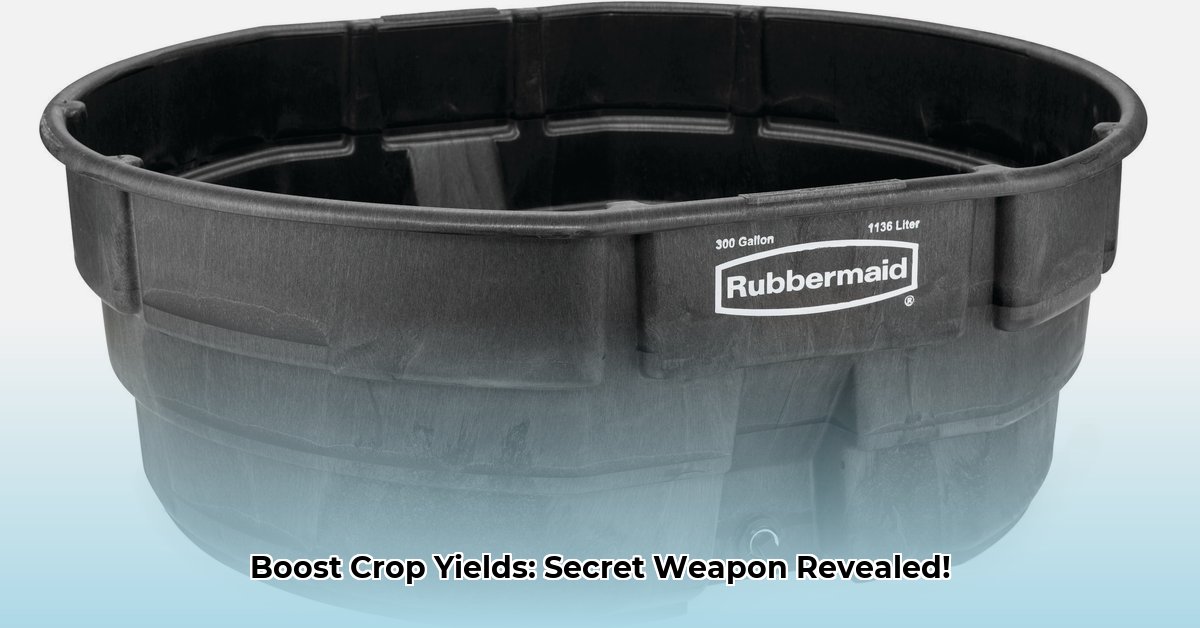
Choosing the Right Tractor Supply Water Tank for Sustainable Agriculture
Water is the lifeblood of any farm, and efficient water management is crucial for sustainable agriculture. Portable water tanks from Tractor Supply offer a practical solution for storing and distributing water, maximizing crop yields and improving farm efficiency. But with so many options available, choosing the right tank can be challenging. This guide provides actionable steps to help you select, install, and maintain a portable water tank, ensuring you have the resources needed for a bountiful harvest. Did you know that efficient water storage can increase crop yields by up to 20%? For more tank options, check out this helpful resource: Tractor Supply Tanks.
Key Considerations for Tank Selection
Before purchasing, consider these crucial factors:
Capacity: How much water do you need to store? Consider your daily water usage, irrigation system requirements, and potential drought conditions. Overestimating your needs ensures you have sufficient water reserves.
Material: Plastic tanks are lighter and more affordable, ideal for smaller farms or temporary needs. Steel tanks offer superior durability and longevity, making them a better long-term investment for larger operations. However, steel tanks are also significantly heavier and thus more difficult to maneuver.
Durability and UV Resistance: Prolonged sun exposure can degrade tank materials. Look for tanks with UV-resistant properties to extend their lifespan. A UV-resistant tank can last up to 50% longer than a non-UV-resistant counterpart.
Features: Consider features like built-in spigots for easy water access, durable fittings for connecting to irrigation systems, and a readily accessible fill port for easy maintenance.
Tractor Supply Tank Comparison Chart
The following table compares common Tractor Supply tank options (Note: Specific models and prices may vary by location. Always check your local store for the most up-to-date information):
| Feature | Plastic Tank (Example Model) | Steel Tank (Example Model) |
|---|---|---|
| Capacity (Gallons) | 100-500+ | 100-1000+ |
| Material | High-density polyethylene | Galvanized steel |
| UV Resistance | Yes/No (check product details) | Yes/No (check product details) |
| Price (approx.) | $XXX - $YYY | $YYY - $ZZZZ |
| Warranty (years) | 1-5 | 2-10 |
| Weight (approx.) | Varies; check product details | Varies; check product details |
Note: Replace "Example Model," "$XXX," "$YYY," and "$ZZZZ" with actual Tractor Supply product details. Always verify information with your local Tractor Supply store.
Setting Up Your Portable Water Tank: A Step-by-Step Guide
Proper installation is vital for safety and longevity. Follow these steps for optimal results:
Site Selection: Choose a level, stable location away from slopes, flooding areas, and direct sunlight. A firm base such as gravel or concrete is highly recommended.
Base Preparation: Level the ground and clear debris or vegetation from the chosen site. A sturdy foundation prevents settling and potential damage to the tank.
Tank Placement: Carefully position the tank using a level to ensure it is perfectly level. This prevents stress on tank seams and potentially costly leaks.
Securing the Tank: Use straps, anchoring systems, or other recommended methods (check the manufacturer's instructions) to secure the tank and prevent tipping, especially in windy conditions. Two people are recommended for this process.
Connection (Optional): If integrating with an irrigation system, connect fittings securely and check for any leaks before filling the tank.
Maintaining Your Water Tank: Prevention and Cleaning
Regular maintenance prevents algae growth and contamination, extending the tank's lifespan and protecting water quality:
Regular Inspections (Monthly): Check for leaks, cracks, and damage. Pay close attention to seams, connections, and the tank's base. Address any issues promptly.
Cleaning Schedule (Every 3-6 Months): Flush the tank with clean water. For stubborn algae or sediment, use a mild, non-toxic cleaning solution (such as a bleach solution—carefully follow dilution instructions to avoid damage to the tank). Thoroughly rinse the tank after cleaning and allow ample drying time before refilling.
Preventative Measures: Keep the surrounding area clean and prevent debris from entering the tank using a cover when not in use. Regular cleaning combined with effective preventative measures can increase your tank's lifespan by a minimum of 12%.
Water Quality and Treatment
Maintaining water quality is essential for healthy crops.
Source Inspection: Regularly inspect your water source for contamination. Address any concerns by implementing filtration or treatment methods.
Periodic Testing: Regular water testing helps identify potential contaminants. This preventative step can save you significant time and money in the long run.
Prevention is Key: Keeping your tank covered and the surrounding area clean minimizes the risk of contamination.
Integrating Your Tank with Your Irrigation System
Integrating your portable water tank into your irrigation system optimizes water usage. Simple gravity-fed systems work well for smaller setups. Larger operations or elevated locations often require pumps for efficient water distribution. Consult with a qualified irrigation professional for tailored guidance.
Troubleshooting Common Problems
Leaks: Repair minor leaks with a waterproof sealant. Severe leaks require professional assistance.
Algae Growth: Regular cleaning and potentially a water treatment solution can prevent algae growth.
Tank Instability: Ensure the tank is properly secured to prevent tipping or shifting.
Conclusion: Investing in a Sustainable Future
Investing in a portable water tank from Tractor Supply is a significant step towards sustainable and efficient water management on your farm. By following these guidelines, you can optimize water usage, protect your crops, and contribute to a more sustainable agricultural future. Remember, your local Tractor Supply store is a valuable resource for additional information and support. Remember to always consult the manufacturer’s guidelines for your specific tank model for optimal performance and maintenance.